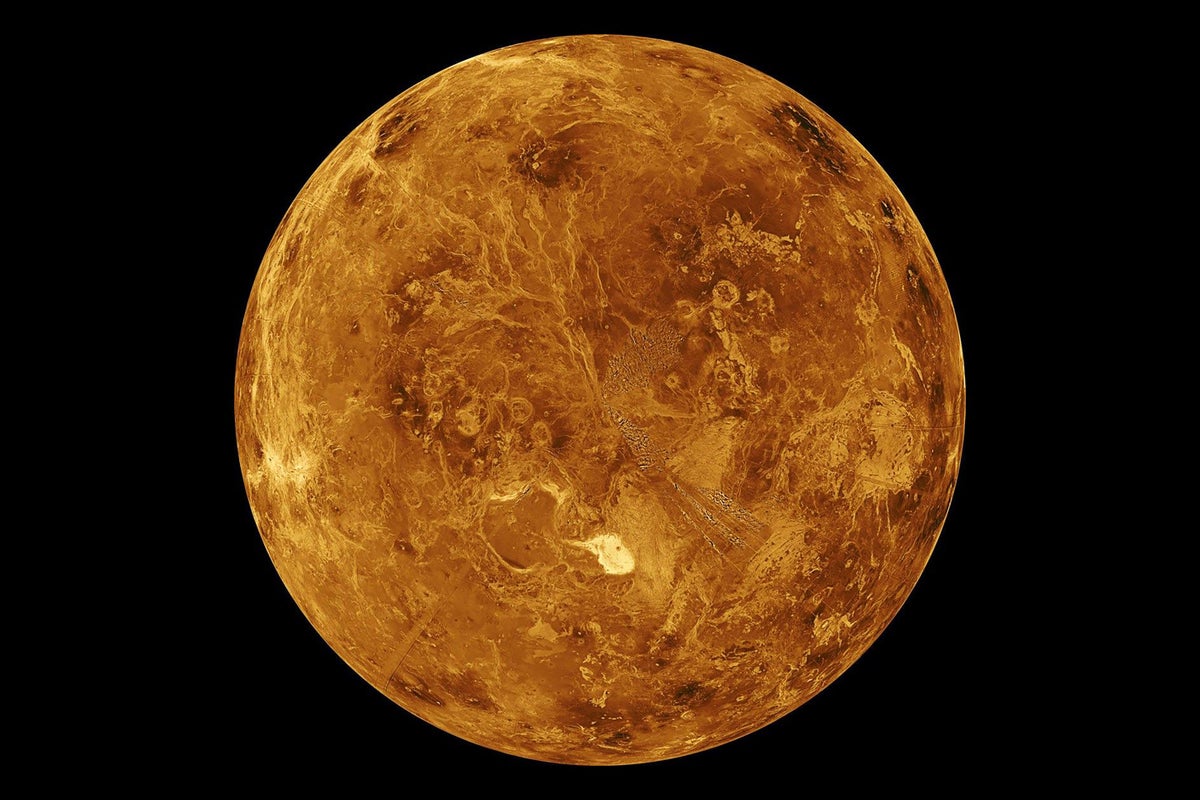“Venus works differently than the Earth but not as different as what was originally assumed,” says the study’s co-lead author Anna Gülcher of the University of Bern in Switzerland. “We should think of tectonics as not just a black-and-white picture.”
If you’re enjoying this article, consider supporting our award-winning journalism by subscribing. By purchasing a subscription you are helping to ensure the future of impactful stories about the discoveries and ideas shaping our world today.
Venus is called “Earth’s evil twin” for good reason: the planet is almost exactly as large as the Earth and is made of roughly the same stuff. But while Earth is a verdant water world, Venus is a scorched hellscape with temperatures hot enough to melt lead, a dreary, permanently overcast sky and air so thick that it crushes spacecraft as if they were tin cans.
For a while, Venus was widely assumed to be just as dead on the inside as it is on the outside. Lacking any obvious plate tectonics—which can help release a world’s internal heat—Venus’s interior was thought to instead just simmer like the contents of a tight-lidded pot on a stove. According to one popular hypothesis, the pot had eventually boiled over: after eons of frustrated heating, some 800 million years ago, the planet’s outer shell buckled, and Venus’s entire surface was paved over with immense outpourings of fresh lava. And, the thinking went, with all that heat dissipated, the planet’s geology basically shut down.
Tectonics refers to the processes that deform a rocky planet’s brittle outer shell. On Earth, this outer shell—the lithosphere, which includes the crust and part of the upper mantle—is broken into tectonic plates that drift over the hot, plastic mantle. When two plates collide, one of them can slide below the other and dive down into the mantle in a process called subduction. On Earth, subducting plates start melting as they sink, feeding volcanoes along plate boundaries. Such volcanoes include Japan’s Mount Fuji and western North America’s Cascade Range.
Unlike Earth, Venus doesn’t have global plate tectonics. The new study suggests, however, that around coronae, something quite similar to subduction could be happening.
Gülcher and her colleagues simulated several tectonic processes that might be occurring around coronae and compared their predictions to real observations collected by the Magellan probe 30 years ago. The comparisons were more than skin-deep: the researchers used gravity data to take a peek underground. Hot rock is generally less dense than cold rock, and these density variations from place to place can correspondingly alter the strength of a planet’s gravitational field. So Magellan’s spatial mapping of Venus’s gravity can “see” if there’s hot, light material under a corona—a sign that rock is actively rising up from the mantle below.
Working with 30-year-old data comes with an obvious limitation: the data quality often isn’t very good compared with newer observations. The new study’s researchers did well with what they had, Byrne says. But NASA’s upcoming VERITAS (Venus Emissivity, Radio Science, InSAR, Topography, and Spectroscopy) mission could do much better—and the team predicted exactly how much better in the paper. “The improvement would be extraordinary,” Cascioli says. Instead of being limited to analyzing 75 coronae, VERITAS’s gravity dataset should allow scientists to examine hundreds of the strange ring-shaped features.
For the foreseeable future, Venus is the only other large, rocky world that we or our robotic emissaries will ever reach. Understanding why Earth and Venus ended up so different despite having so much in common helps us understand our own planet—and whether the rocky worlds we’re beginning to glimpse around other stars are more like Earth or instead resemble its evil twin.
“Venus is the world that we probably understand least,” Byrne says. “Yet it’s the one, arguably, I think, that’s the most important.”
Elise Cutts is a science writer based in Austria. She has written for Scientific American, Quanta, National Geographic, and other outlets.
Source: www.scientificamerican.com
